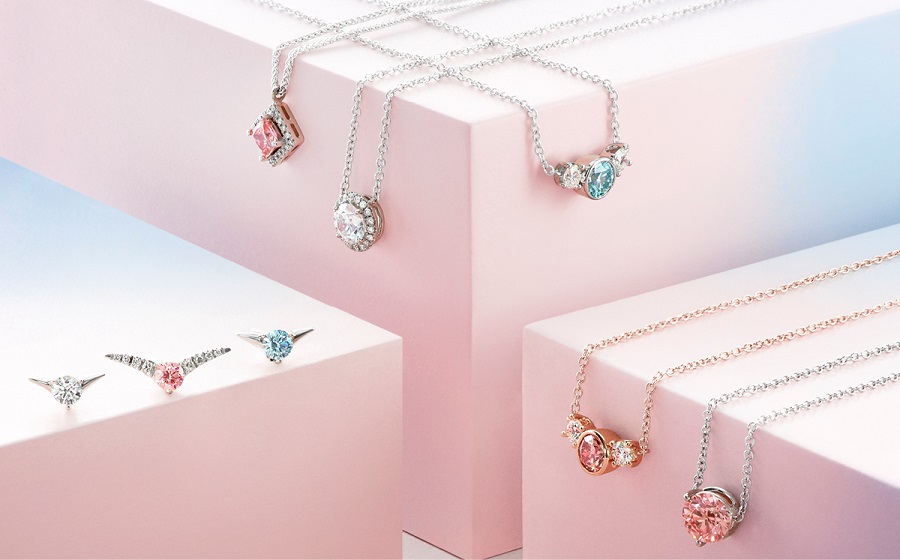Look at any list of the most powerful advertising messages of all times and the 1948 De Beers-N.W. Ayers slogan “A Diamond Is Forever” is at the top. While many claim the line made the $80 billion diamond industry what it is today, advertising didn’t do it alone.
The diamond’s allure was further propelled in the early 50s by the seductive image of Marilyn Monroe singing an ode to the stones:
Men grow cold as girls grow old
And we all lose our charms in the end.
But square-cut or pear-shaped
These rocks don’t lose their shape.
Diamonds are a girl’s best friend.
Marilyn would have been 92 years old on June 1, 2018, and she never lived long enough to experience the truth in those lyrics. But her image and that song reinforced the “A Diamond Is Forever” message in a deep cultural way that no paid advertising ever could have achieved.
Fast forward to today and a hot new rock is threatening the genuine diamond-is-forever concept: De Beers lab-grown diamonds. Thanks to advances in manufacturing technology, gemstone-quality diamonds can now be industrially grown. These lab-grown diamonds are identical in composition and structure to diamonds formed naturally over the ages in the earth.
Priced lower than natural diamonds and brought to market without the collateral environmental and human damage associated with mining operations, lab-grown diamonds are increasingly the choice for the conscientious, social justice, values-focused consumer.
And no consumer is more conscientious or values-focused than 18-37-year-old millennials who are the primary target for the diamond industry’s flagship product: engagement rings.
Diamonds Disrupted
As of yet, the lab-grown diamond industry is tiny compared to mined diamonds, representing less than 1 percent of the global market for rough diamonds, according to estimates by Morgan Stanley. But that is about to change.
“The introduction of hot-forged jewelry-grade diamonds, identical to those the earth takes eons to mete out, has sweeping implications for the $80 billion industry that has relied on the perceived scarcity of mined diamonds to drive up value,” said Amish Shah, president of R. A. Riam Group which offers mined-diamond jewelry and ALTR Created Diamonds selling the lab-grown variety. “Sales of lab-created diamonds, now estimated at $150 million, are expected to increase to $1 billion by 2020 and outpace mined diamonds, which have been in decline.”
Until now the mined-diamond industry – and De Beers – have been pushing back against the disruptive lab-grown producers with the claim that only mined diamonds are the real thing. Lab-grown are fake pretenders. But that argument doesn’t hold water. “Lab-created diamonds and earth-mined diamonds are exactly the same thing. It\’s like ice on a frozen lake and ice created in your freezer. One is created by a natural process and one by a manmade process. But in the end, they are identical in all ways down to the atomic level,” said Gary LaCourt, CEO of Forever Companies that markets alternative and lab-grown diamond brands Diamond Nexus, 1215 Diamond, and Forever Artisans.
De Beers Sees the Writing on the Wall
No company stands more to lose than De Beers, which controls 35-40% of the mined-diamond market. After years of disavowing the authenticity of lab-grown diamonds, De Beers has done a 180° about face and just announced it is launching a line of manmade diamonds under the Lightbox Jewelry brand.
“Lightbox will transform the lab-grown diamond sector by offering consumers a lab-grown product they have told us they want but aren’t getting: affordable fashion jewelry that may not be forever, but is perfect for right now,” Bruce Cleaver, CEO of De Beers Group said in a statement. “Our extensive research tells us this is how consumers regard lab-grown diamonds – as a fun, pretty product that shouldn’t cost that much – so we see an opportunity that’s been missed by lab-grown diamond producers.”
Adding to the fun element in the Lightbox Jewelry line will be an emphasis on colored pink and blue stones to compliment the traditional clear white diamonds. Prices will start at $200 for a quarter-carat stone to $800 for one-carat. These prices, however, don’t include the cost of the jewelry setting, which will initially include earrings and necklace designs, but not rings.
The company release does not specifically mention the primary target for the Lightbox Jewelry line. It is clearly self-purchasing women, not men buying diamonds for women. Strategically, Lightbox won’t threaten De Beers’ core engagement ring market (since it is not even offering rings in the collection). To that end, De Beers distinguishes its mined-diamond offering as “forever,” as in “A Diamond Is Forever,” compared to its Lightbox style savvy alternative as “for right now.”
It also is a smart move that DeBeers calls Lightbox “fashion jewelry,” positioning it as the more affordable alternative to natural, mined-diamond “fine jewelry” quality. The official industry distinction between fine and fashion jewelry is that fashion doesn’t have precious gemstones or precious metals (other than plating) while fine jewelry is made with natural precious gemstones and metals.
As De Beers moves Lightbox Jewelry into the market, it guides its customers: “If you want fashion jewelry, Lightbox is your choice. If you want precious fine jewelry, then Forevermark and De Beers Jewellers is for you.”
Millennials Want Different Options
De Beers may not be able to sell that distinction, however, as millennials have already shown that they aren’t buying into the idea that a lab-grown diamond is in any way inferior to its mined counterpart. Quite the contrary. Among consumers in general, and millennials specifically, mined-diamonds have a bad reputation for the high human cost and environmental damage that mining operations entail. This generation is fixated on responsible sourcing and manufacturing of the products they buy. Lab-grown diamonds meet that demand, while mined-diamonds fall short.
“Millennials want to know that the products they buy aren’t harming anybody in their production. This is across all consumer products,” said Marty Hurwitz, CEO of MVI Marketing, whose company recently conducted a study among 1,000+ American consumers, aged 21-40 years, across all income ranges with half having household incomes of $50,000 or higher. “That’s why companies are tracing chain of custody and providing transparency of supply chain. There isn’t a product in Whole Foods, Nordstrom or Walmart, for that matter, that isn’t being traced in case someone asks. Millennials are driving this trend.”
In that survey, nearly 70 percent of consumers said “Yes,” they would consider a lab-grown diamond for the center stone in an engagement ring if they were shopping or shopping with someone for an engagement ring. That represents an increase of 13 percentage points in only one year. “Millennials are telling the jewelry industry this is a product they are interested in and will come into the store to look at it,” Hurwitz adds.
De Beers Moves to Control the Diamond Narrative
By embracing lab-grown diamonds and calling it their own, De Beers is disrupting the industry’s stance against the numerous startups eating away at their market dominance. These brands include Ada Diamonds, ALTR Created Diamonds, Diamond Nexus, Diamond Foundry, New Dawn Diamonds and Pure Grown among others, though no market-share leader has emerged as yet.
Rather than fight the rising tide against laboratory-grown diamonds which has found a consumer market ready, willing and able to embrace it, De Beers is getting in early to take a leadership position in an emerging category with no clear-cut leader. Now it will have one, with De Beers’ mighty marketing muscle moving in to define the category and establish its positioning against the lab-grown upstarts, as well as elevating its mined-diamond precious jewelry offering.
De Beers helped make diamonds what they are today. Next, De Beers is going to try to make laboratory-diamonds what they will be tomorrow: a fun fashion pretender to the real, rare, precious, natural, “forever” diamond.
And as it did with diamonds throughout its 130-year history, De Beers is going to become the market leader by using its power to establish prices for both the mined and laboratory-diamond markets. Its Lightbox Jewelry prices are way below current levels in the industry today, and given advances in technology and production processes, the costs to produce manmade stones will only continue to fall. By establishing a low-price alternative to the real thing, De Beers will aim to drive up the prices for its natural stones. It’s a very smart and bold move and one that few saw coming.





